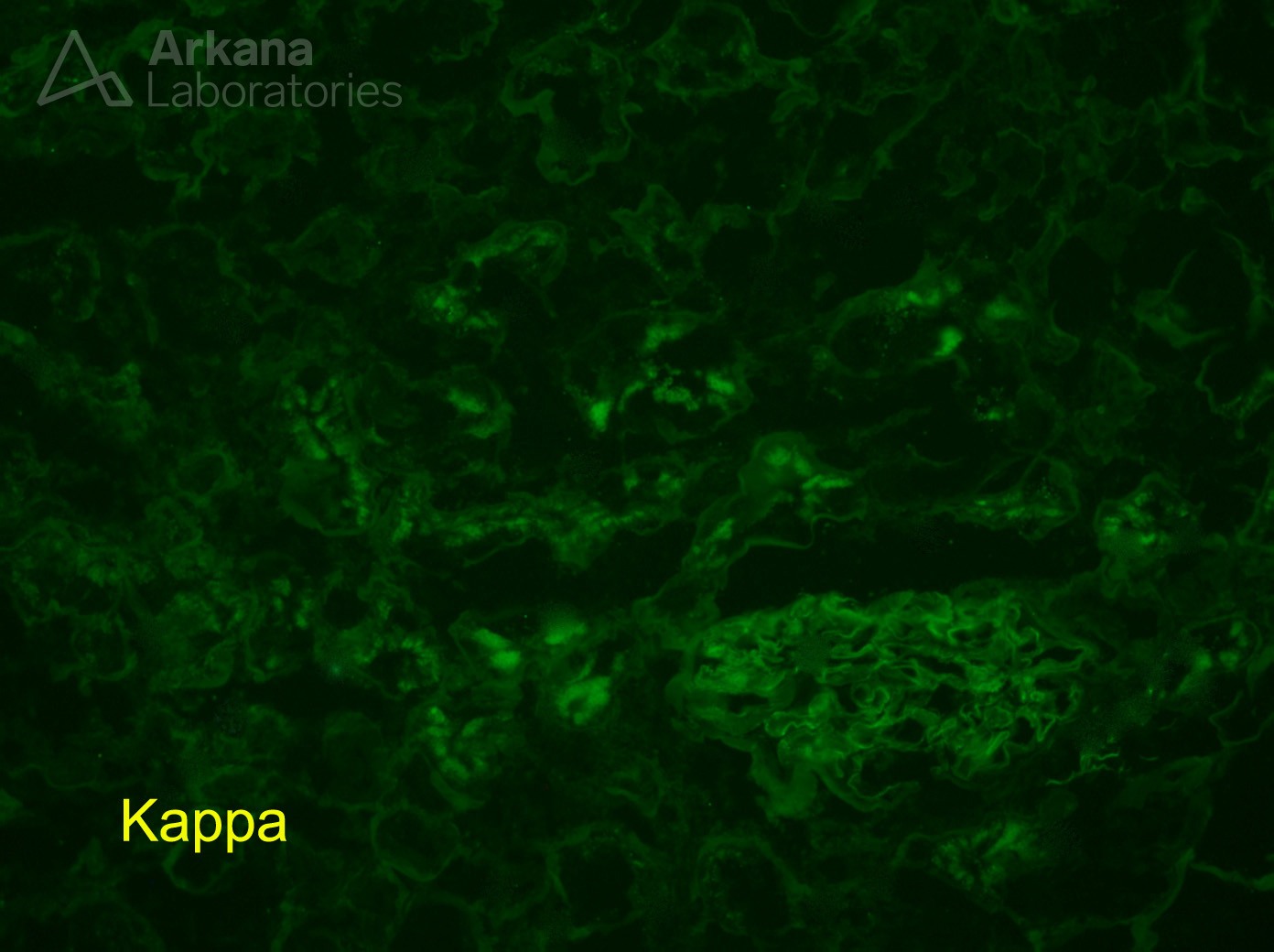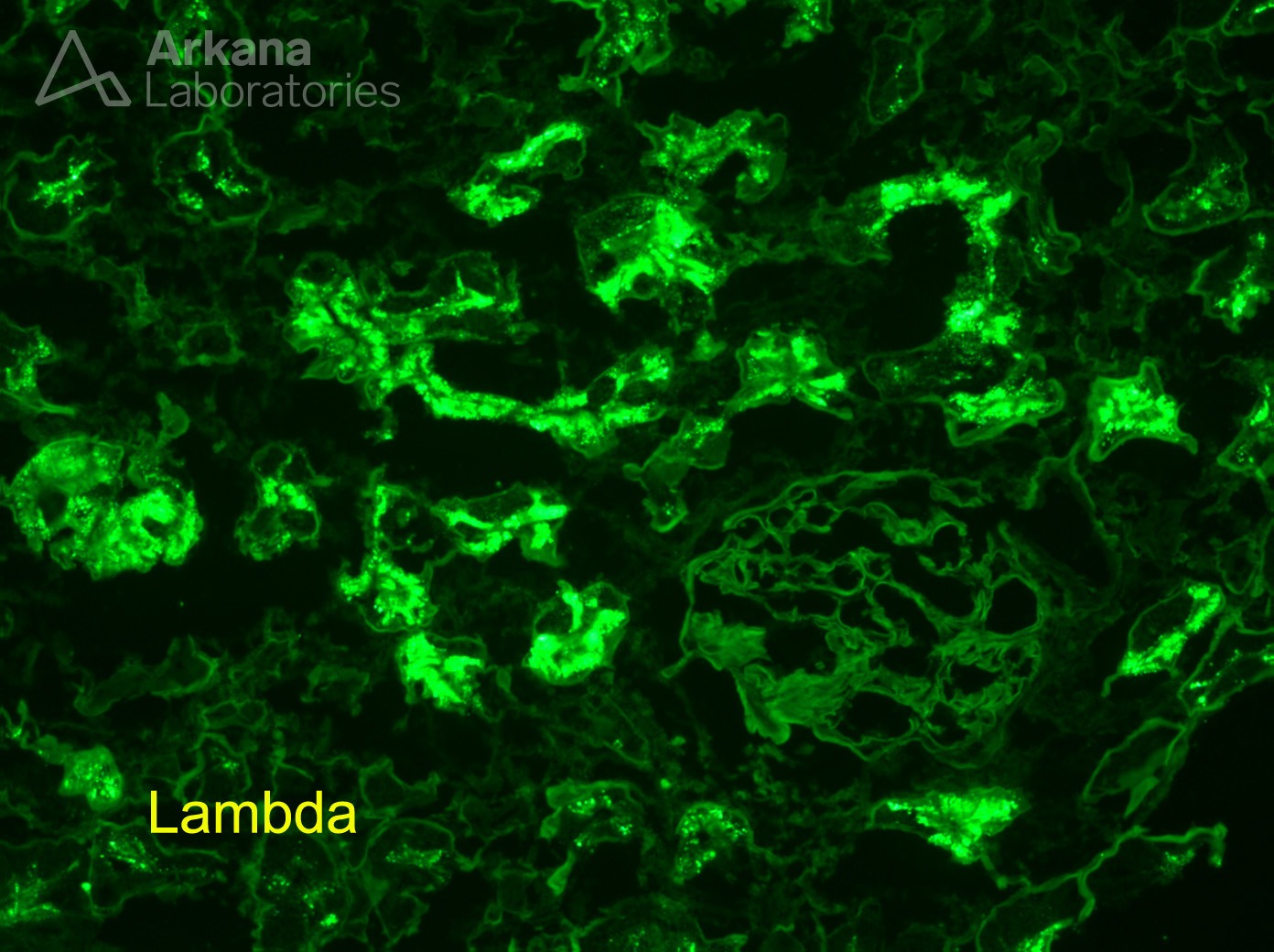Light chain proximal tubulopathy (LCPT) is a disease characterized by the renal biopsy finding of cytoplasmic light chain restriction within the proximal tubule cells. It has traditionally been known for the presence of Fanconi syndrome though this is not present in the majority of cases in more recent case series.1,2 There is a morphologic spectrum to the disease. Most notably, it can occur with or without crystalline inclusions in the proximal tubule cytoplasm. The photomicrographs here show lambda restriction in the proximal tubule cytoplasm in a case without evidence of crystal formation by light and electron microscopy. When there is evidence of noncrystalline proximal tubule light chain restriction on the biopsy, careful clinicopathologic correlation must be performed to determine whether the findings represent true disease or simply physiologic trafficking of free light chains. Specifically, if there is both clinical evidence of renal injury and morphologic evidence of tubular injury then the free light chains are likely to be a pathogenic etiology of the patient’s kidney disease. Alternatively, patients with normal renal function and no evidence of tubular injury on biopsy are probably best placed in an indeterminate category. In these cases, the significance of the finding is undetermined. Future studies are needed to detail the natural clinical course of LCPT of all types in order to provide prognostic information which will aid in treatment decisions.
References:
1. Stokes MB, Valeri AM, Herlitz L, Khan AM, Siegel DS, Markowitz GS, D’Agati VD: Light Chain Proximal Tubulopathy: Clinical and Pathologic Characteristics in the Modern Treatment Era. J Am Soc Nephrol 27, 2015
2. Larsen CP, Bell JM, Harris AA, Messias NC, Wang YH, Walker PD: The morphologic spectrum and clinical significance of light chain proximal tubulopathy with and without crystal formation. Mod Pathol 24: 1462-1469, 2011
Quick note: This post is to be used for informational purposes only and does not constitute medical or health advice. Each person should consult their own doctor with respect to matters referenced. Arkana Laboratories assumes no liability for actions taken in reliance upon the information contained herein.




